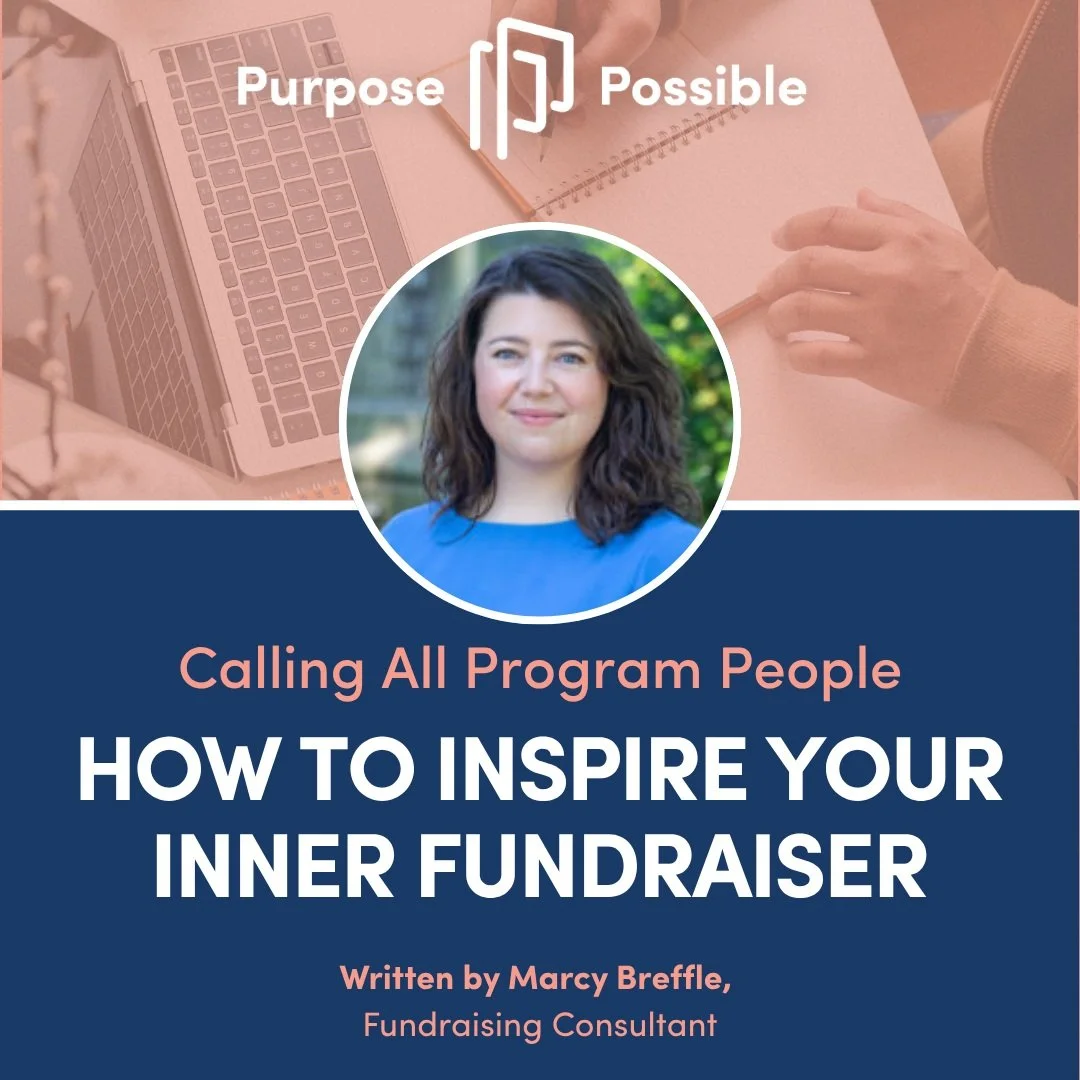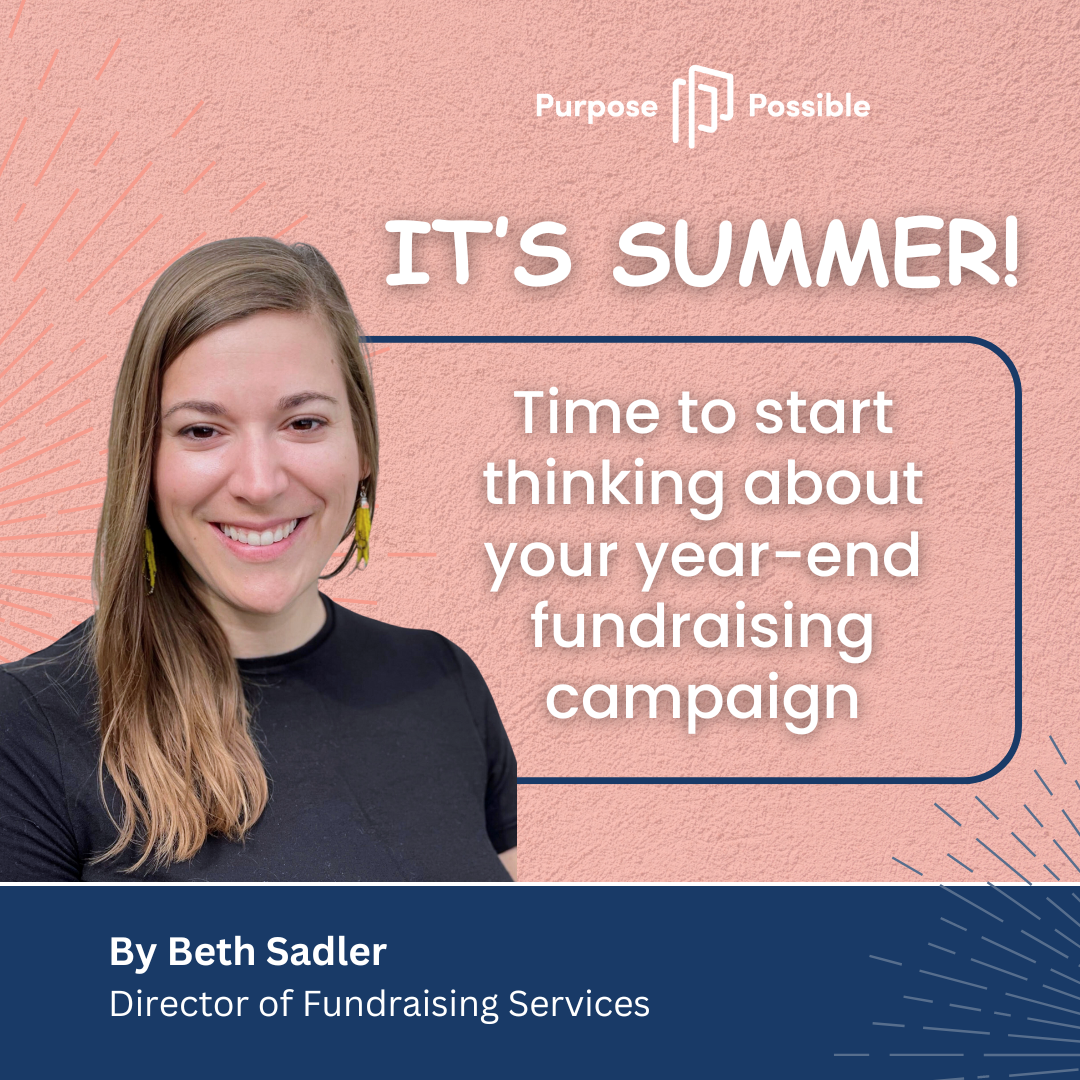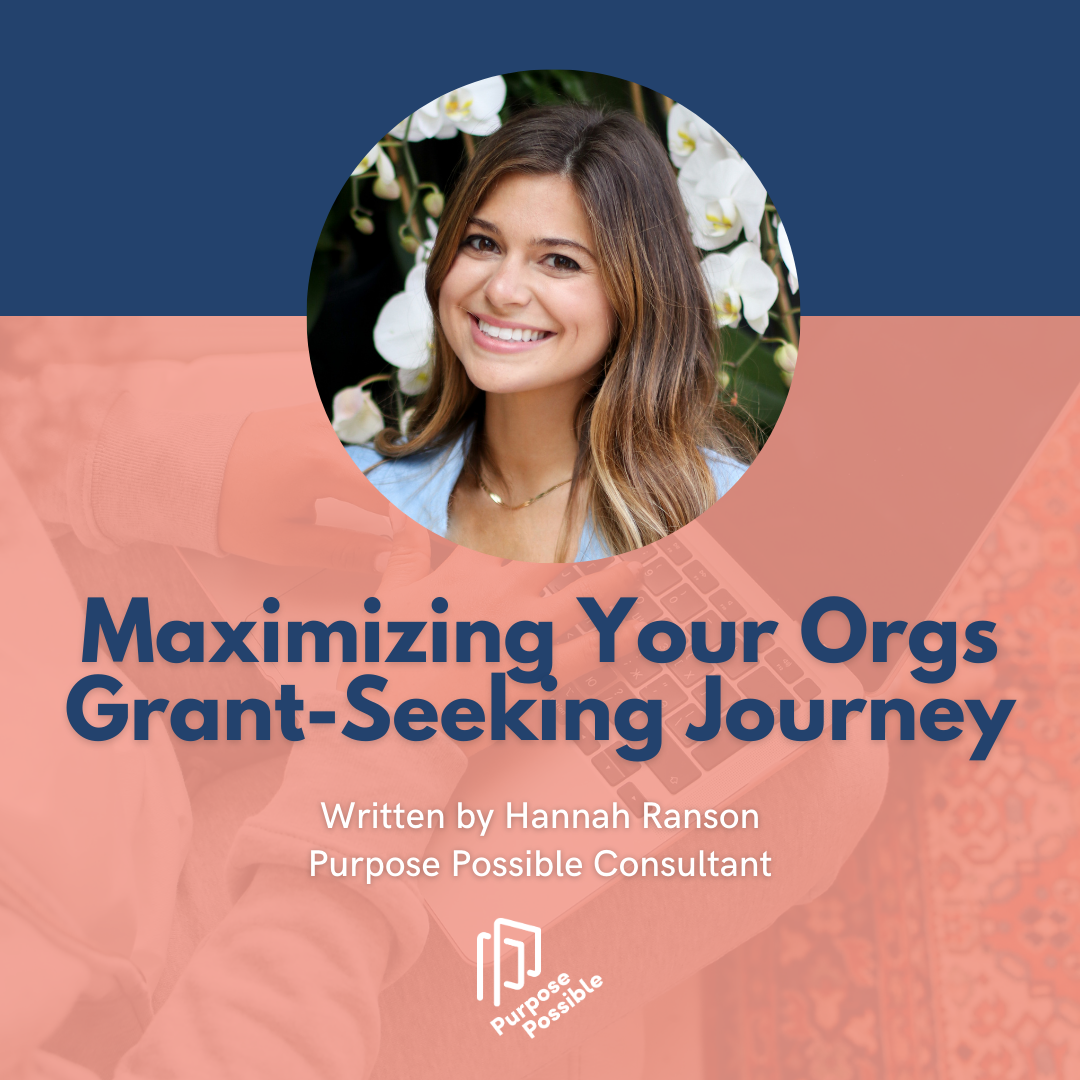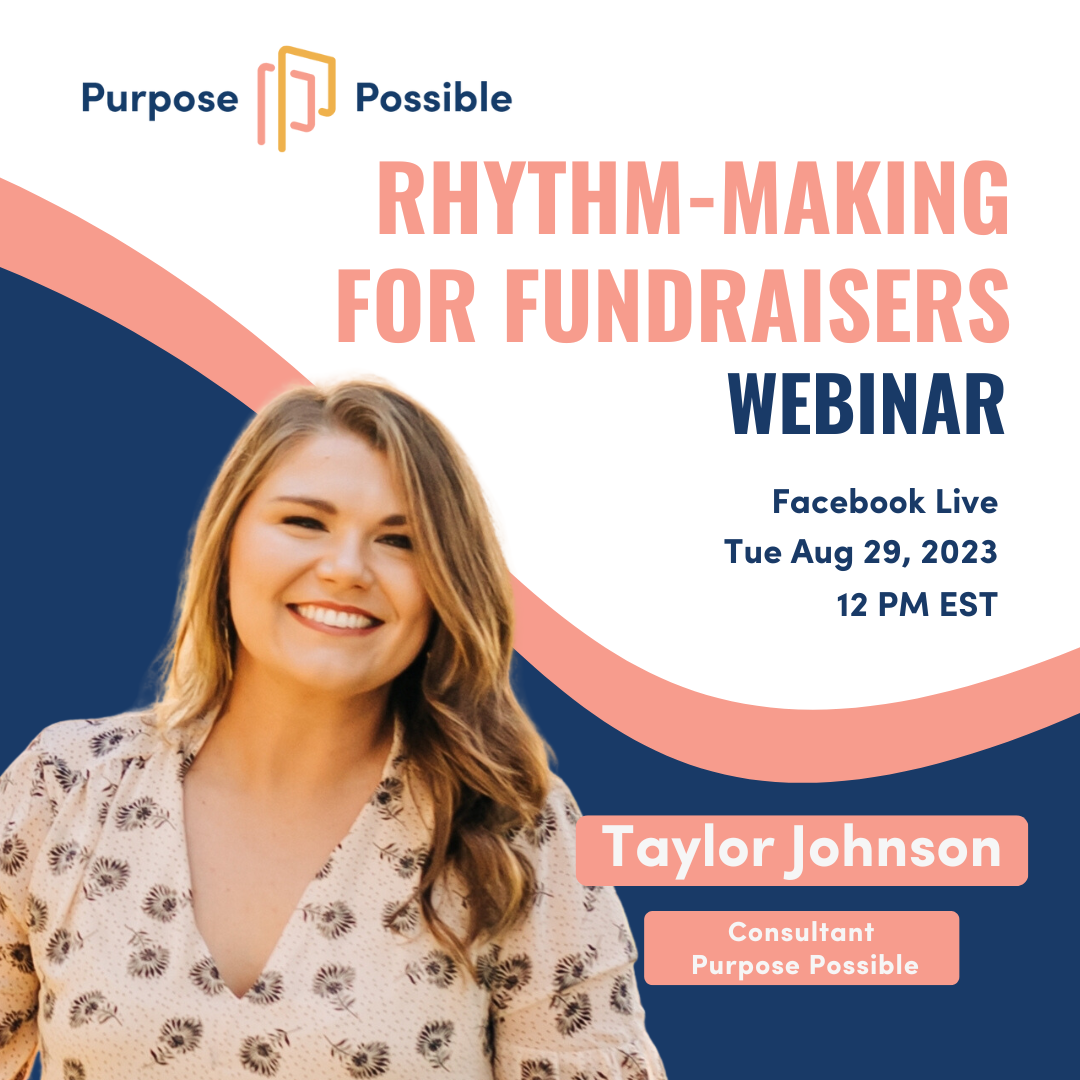
Using GivingTuesday to Drive Year-End Results
Think of GivingTuesday as one key piece of your end of year fundraising pie. If your campaign runs only in December, GivingTuesday is the perfect launch pad. If you begin earlier, use the day to create extra momentum and visibility without letting it take over your entire strategy.

Investing in Our Community: A Call to Action for a New Era of Giving
While the legislation may be intended to generate tax revenue, it presents a significant challenge to the vital work of nonprofits in Atlanta and across Georgia.

2025 Purpose of Giving: Insights and Takeaways
On August 13, Purpose Possible and nearly 200 mission-driven professionals gathered and tuned in for The Purpose of Giving: Insights from Giving USA. Here are key highlights, actionable takeaways, and linked resources for organizations, professionals, and community builders looking to harness these insights and data.

How to Inspire Your Inner Fundraiser
“Everyone is a fundraiser.” This phrase can strike fear into the hearts of non-development staff, conjuring up images of standing on a gala stage before a room full of major donors. Dear program people, let me assuage your fears - you will almost never be asked to make the “big ask.” However, every staff member does have a role to play in their organization’s fundraising efforts.

What We Learned from the 2025 Giving USA Report
The 70th annual Giving USA Report, the most comprehensive look at charitable giving in the U.S., revealed how Americans gave in 2024.

Staying Connected with Funders
Funders view grantees as trusted partners, which is why building and maintaining strong relationships is critical. Ongoing engagement with funders ensures your organization stays top of mind and demonstrates your value as a trusted partner.

Finding Funders that Fit
As a grant writer, you’ll receive a variety of well-meant suggestions, especially at times when your organization is facing financial challenges.
However, in a small—to medium-sized nonprofit, you and your organization must decide how to use your resources most effectively. Smart grant prospecting will help you maximize the funds raised and provide guidance for others who want to support your efforts.

FEARLESS FUND: What happened & what you need to know
The lawsuit against the Fearless Fund sparked widespread attention, raising questions for nonprofit and philanthropic organizations. Central to the case is whether race-based initiatives, aimed at supporting underfunded groups and addressing systemic inequalities, serve the public interest or violate anti-discrimination laws.

Crafting Compelling Communications for Maximum Year-End Fundraising Impact
Effective communication is vital to driving fundraising success, particularly at year-end. By aligning your messaging, you can engage donors, acquire new supporters, and cultivate community to achieve your organizational goals.

Grants Webinar Series
Purpose Possible's fundraising team hosted an insightful four-part webinar series covering essential topics in grant funding, project planning, proposal writing, and grants management. Aimed at both newcomers and seasoned professionals seeking a refresher, each session focused on practical tools and strategies to enhance fundraising efforts and improve grant seeking success.

Embracing Reparations as a Fundraising Strategy for Black-led/Black-serving Organizations
In recent years, the philanthropic sector has seen a significant shift towards adopting reparations as a fundraising strategy, especially for Black-led/Black-serving organizations. This transformative approach not only addresses historical injustices but also empowers these organizations to build a sustainable future.

It’s Summer! Time to start thinking about your year-end fundraising campaign
According to Double the Donation, 30% of annual giving happens in December, with about 10% of all donations coming in the last 3 days of the year. Now is the time to ask yourself, “What can I be doing now to prepare for a successful year-end campaign?”

Maximizing Your Orgs Grant-Seeking Journey
Applying to every grant you find isn’t an efficient way to fund an organization. Achieve success by strategically planning your grant-seeking efforts.

Investing Beyond Grades, Graduation, and College: Developing the Whole Child
Before you submit your next grant application, here are some commonly asked funder questions that demonstrate impactful whole-learner programs to consider…

Announcement from the Fitzgerald Foundation
The Betty and Davis Fitzgerald Foundation is pleased to announce a renewed strategic direction following a comprehensive planning process.

EOY For The Win!
This webinar that's all about finding the most effective techniques to spice up your end-of-year campaigns! Join Laura Hennighausen as she dives into the research studies and revealing the best tips and tools for securing donations.

Rhythm-Making For Fundraisers
Rhythms create processes, boundaries, and pave lanes for success. Taylor Johnson, Consultant with Purpose Possible, discusses Rhythm Making for nonprofits and how it can help fundraising teams become successful in planning, communication, donor relationships, and more.

Demystifying Asset Giving For Nonprofits
Assets are additional fundraising opportunities that are massively untapped by small to mid size nonprofits. From stocks, crypto and donor advised funds to endowments, learn more about how nonprofits should approach them, and why it should matter to you. Join us as Karen Houghton, CEO of @Infinite Giving and a Nonprofit Investment Advisor, guides us through asset giving for nonprofits!

Virginia Nonprofit Sector Report 2023
Much like the 2022 State of the Baltimore Nonprofit Sector released by T.Rowe Price Foundation in late 2022, this new report shows that the nonprofit sector in our region continues to be robust but needs significant capacity and leadership to continue to thrive. As a consulting firm in the DMV region, we are also seeing some of the most impactful nonprofits struggle with staffing, burnout, financial challenges, and a strategic vision for the next horizon.

Susannah at the Science of Philanthropy Initiative Conference
In September, I had the opportunity to present at the IU Lilly Family School of Philanthropy Science of Philanthropy Initiative Conference alongside our partner, Mailchimp. While one of our key takeaways from the conference was the realization that we did not take enough data analytics courses in school, others had some valuable takeaways for application in more practical fundraising efforts.
